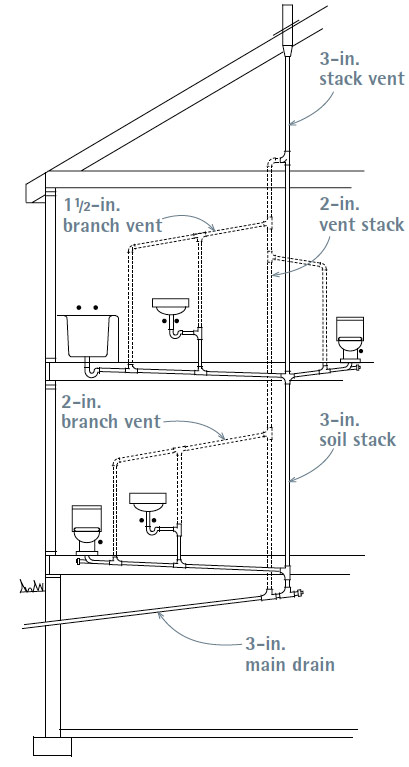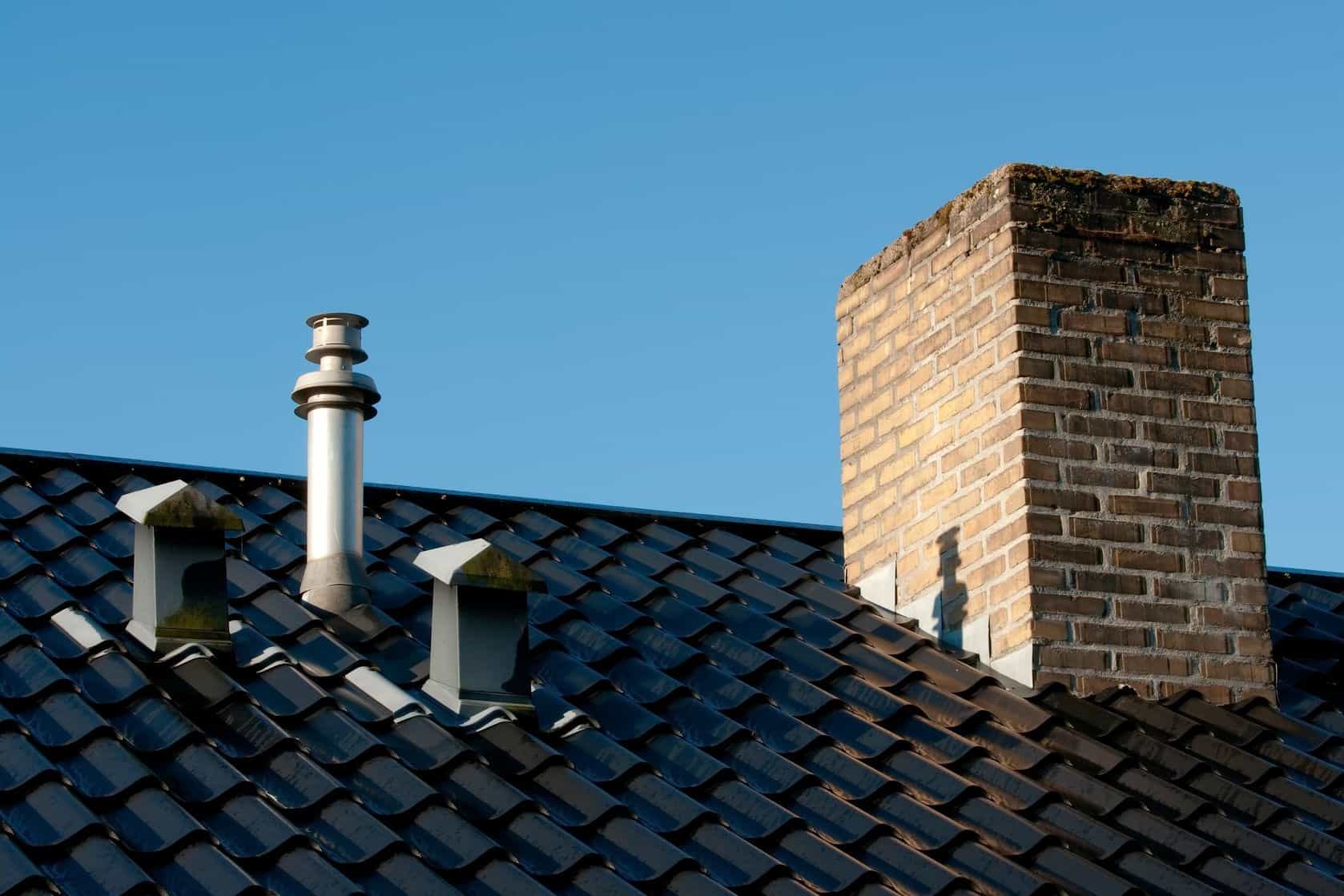The Significance of Adequate Ventilation in Residential Plumbing Systems
The Significance of Adequate Ventilation in Residential Plumbing Systems
Blog Article
Just how do you feel with regards to The Upsides of Proper Ventilation in Plumbing Design?

Correct air flow in plumbing systems is frequently neglected, yet it is vital for maintaining the capability and security of your home's pipes. Ventilation aids manage air pressure, protect against the build-up of harmful gases, and make certain the efficient elimination of waste. In this guide, we will certainly discover the relevance of appropriate pipes air flow, just how it functions, and the advantages it offers your plumbing system.
Recognizing Air Flow in Plumbing
Air flow in pipes refers to the network of pipelines that enable air to stream with the drain system. These vents serve numerous objectives, including regulating air pressure within the pipelines, protecting against drain gases from going into the home, and aiding in the smooth circulation of wastewater.
Just How Air Flow Works in Plumbing Systems
Air Pressure Policy
Appropriate ventilation maintains well balanced air pressure within the pipes system. When water streams through pipes, it displaces air. Without appropriate air flow, this displacement can develop unfavorable stress, causing reduce drains pipes or siphoning of water from traps, which can cause unpleasant smells to seep right into the home.
Stopping Drain Gas Build-up
One of the most important functions of plumbing vents is to stop drain gases, such as methane and hydrogen sulfide, from accumulating within the home. These gases can posture significant wellness risks and are highly flammable. Vent pipes permit these gases to run away safely outside.
Helping in Waste Elimination
Ventilation aids in the effective removal of wastewater by preventing airlocks in the water drainage system. When air can stream easily through the vents, it allows water and waste to flow smoothly with the pipes, reducing the threat of obstructions and back-ups.
Sorts Of Pipes Vents
Key Heap Vent
The primary stack air vent, likewise called the air vent pile, is the main air vent in a plumbing system. It extends from the major drain line up through the roof covering, allowing gases to leave and fresh air to enter the system.
Branch Vent
Branch vents attach to the main pile air vent and serve specific components, such as sinks, commodes, and showers. These vents make sure that each component has adequate air flow to function appropriately.
Air Admission Shutoff (AAV).
An Air Admittance Shutoff (AAV) is a one-way valve that allows air to get in the plumbing system without the need for a typical vent pipe prolonging with the roof. AAVs are frequently utilized in remodellings or locations where mounting a common air vent is unwise.
Signs of Poor Air Flow in Pipes.
Slow Draining Fixtures.
If your sinks, tubs, or bathrooms are draining pipes gradually, maybe an indication of poor air flow. Insufficient air flow can create a vacuum result, making it difficult for water to drain pipes appropriately.
Gurgling Seems.
Gurgling sounds coming from drains pipes are commonly a result of air being drawn through water traps because of unfavorable stress in the pipelines. This is a clear indication of inadequate ventilation.
Unpleasant Odors.
Sewer smells inside your home are a red flag that your plumbing system is not properly ventilated. This can suggest that drain gases are not being adequately vented outside, resulting in possibly hazardous conditions.
Typical Ventilation Blunders.
Poor Vent Sizing.
Using undersized vent pipes can cause inadequate air circulation and stress discrepancies in the system. It's essential to use vents that satisfy the details demands of your pipes system.
Improper Vent Placement.
Putting vents also far from the components they offer can reduce their effectiveness. Correct positioning guarantees that air can stream freely and efficiently with the system.
Disregarding Code Demands.
Building regulations supply particular guidelines for pipes air flow. Ignoring these codes can lead to a system that falls short to operate appropriately and might bring about costly repairs or carcinogen.
Advantages of Correct Air Flow.
Enhanced System Effectiveness.
Effectively ventilated pipes systems run much more effectively, with fewer clogs, faster draining, and less strain on the pipelines. This efficiency prolongs the life-span of the plumbing system.
Improved Air Top Quality.
By protecting against sewage system gases from entering your home, correct ventilation contributes to far better indoor air quality, making your living setting healthier and much more comfy.
Stopping Water Damage.
Sufficient air flow assists avoid water from being siphoned out of catches, which can bring about sewage system gases getting in the home and causing water damage in time.
Steps to Make Sure Appropriate Air Flow.
Consulting Plumbing Codes.
Always seek advice from local pipes codes when creating or changing your plumbing system. These codes provide the needed standards for proper venting and ensure your system satisfies security criteria.
Normal Examination and Upkeep.
Routine examinations can assist recognize prospective air flow issues before they become significant problems. Maintenance tasks, such as cleaning up vent pipelines and looking for clogs, are crucial for keeping the system in good working order.
Professional Installment.
For new installations or significant modifications, it's smart to employ a professional plumbing technician. They have the experience to ensure the air flow system is correctly developed and installed according to code.
Verdict.
Correct ventilation is an important element of any kind of pipes system, making sure that it operates effectively and safely. By comprehending the importance of ventilation, identifying the indicators of poor air flow, and taking steps to keep your system, you can stop costly problems and shield your home's air top quality.
4 Things You Should Know About Your Plumbing Vents
What Plumbing Vents Are
Also called a vent stack, a plumbing vent is a vertical pipe attached to your drain line that runs through your roof. The plumbing vent pipe, or plumbing air vent, removes gas and odors from your plumbing system and allows fresh air to enter the pipes, helping the water to flow out of the drain pipes.
What Plumbing Vents Do
Plumbing vents have two basic functions. One of which is to allow unpleasant smelling wastewater and sewer gasses to escape your plumbing system instead of entering your home. Plumbing vent pipes are typically located on roofs, away from windows, to ensure the fumes exit the home completely.
The other function of the plumbing vent is to move fresh air into your plumbing system. This helps move water through every plumbing fixture in your house, like toilets and sink drains. Think of the way in which you need to let a little air into the bottle as you pour soda in order to make the drink flow smoothly.
Different Types of Plumbing Vents
True vent: This is the most common vent option. In simplest terms, a true vent is a vertical pipe attached to your drain line that exits through the roof. They often function as the main vent that other fixtures can connect to. Re-vent pipe or auxiliary vent: Attached to the drain line near specific plumbing fixtures, re-vent pipes run up and over to connect to the main vent. Common vent: Two plumbing fixtures installed on opposite sides of a wall are typically tied into the vent stack using something known as a sanitary cross. Wet vent: This venting option operates as a drain pipe and a vent at the same time. Wet vent drainage systems drain water from one fixture while venting the air from another. Although they’ve been used for over 100 years, wet vent systems have only recently been added to the plumbing code in many areas. If you’re planning on installing one in a bathroom remodel, make sure you check your local code prior to construction. Loop vent: For free-standing fixtures like kitchen island sinks, loop vents are ideal. These vent pipes run under the floor, rise from the P-trap, and create a loop inside the cabinet sink. Air admittance valve: An AAV is a one-way mechanical valve typically installed at the site of the plumbing fixture. AAVs allow venting to occur without having to tie into a larger venting system. They’re ideal for venting fixtures where you aren’t able to easily connect to an existing vent system. Common Plumbing Vent Issues
Although vent pipes typically don’t have water flowing through them, they’re still subject to many typical plumbing issues. For example, clogs are one of the most common problems associated with sewer vent pipes. If your vent pipe gets clogged, all of your plumbing fixtures tied into the vent stack will be affected.
A sink with a slow drain that bubbles and gurgles or a strong sewage smell around your toilet are both indicators that your toilet vent pipe is clogged. Because most vent pipes exit through the roof, old leaves, twigs or even a bird’s nest could be clogging the pipe.
Clogs in your vent pipe system cause a buildup of negative pressure, meaning that water won’t be able to flow out of your home very well. It’s similar to putting your finger over the opening of a straw to trap water inside. When you remove your finger, the water is able to flow out of the straw.
If you suspect you have any blockage in your vent, make sure you have a professional come examine the situation. Left unchecked, a blocked air vent can lead to other costly repairs, like leaks and sediment buildup.
Under Pressure
Pipe vents are essential aspects of a home’s plumbing system. Owning a home means learning about all sorts of things you never put much thought into before. But by understanding as much as you can about the important systems of your home, you can keep those budgets intact and those anxiety levels low.
https://www.homeserve.com/en-us/blog/home-improvement/plumbing-vents/

I'm just very inquisitive about and I'm hoping you enjoyed reading the entire page. Are you aware of somebody else who is looking into ? Take a moment to share it. I cherish your readership.
Call Today Report this page